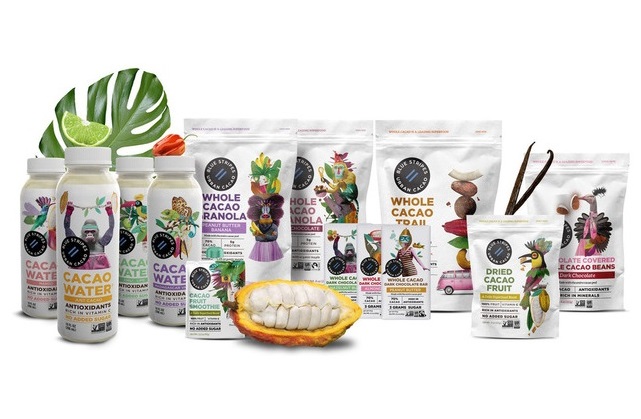Sign up for Consumer Brands SmartBrief today, free.
When examining how to improve the food industry’s sustainability, many companies are focused on cutting down on single-use plastic and other packaging-related efforts. However, more and more brands are concentrating their attention on curbing food waste across the supply chain. As consumers have become more aware of these issues, they are increasingly looking for ways to support solutions, such as upcycled food products.
“Supporting and purchasing products from businesses that upcycle food is the easiest way for consumers to be empowered,” according to Angie Crone, the CEO of the Upcycled Food Association, which represents industry stakeholders that use ingredients that would typically end up as waste in traditional food manufacturing. The group’s focus is on continuing to divert food waste and raising consumer awareness to combat climate change.
One of the major players in the category is Blue Stripes Urban Cacao, which upcycles the parts of cacao pods that chocolate makers typically discard – the shell, beans and fruit. From whole beans and trail mix to fruit smoothies and plant-based water, Blue Stripes is seeking to tout cacao as a superfood as well as spotlight the brand’s upcycled foods sustainability and farm equity mission.
“Since the pandemic and the health crisis, there have been an increase in stories around where and how our food is sourced and used in our daily products,” shared Oded Brenner, CEO and founder of Blue Stripes. “People have become more aware and vocal about making positive changes through consumer goods for our environment and health.”
Food waste reduction
According to data from the Upcycled Food Association, 496,103 tons of food have been prevented from becoming waste via Upcycled Certified foods last year, which is the equivalent of more than 1 million metric tons of carbon dioxide.
“The number of products and ingredients certified is expected to grow at an annual rate of 15% over the next ten years,” added Crone.
This growth will allow shopper to use their purchasing power to advocate for curbing food waste while companies can be a part of those upcycled food solutions as well as identify and tap into a revenue stream that would ordinarily go untouched.
“There are opportunities for collaboration and cost-savings up and down the supply chain, Crone said. “In addition, upcycling keeps valuable nutrition in the supply chain that should be going to human consumption.”
Brenner echoed Crone’s thoughts on how consumer participation and buying power will help expand the upcycled food category.
“The more consumers actively choose products that are positive for the environment, the more it will have a domino effect for all brands to work towards upcycling as much as possible to reduce the carbon footprint,” he said.
Upcycled food education
A core pillar of Blue Stripes’ branding is to clearly display the environmental benefits of upcycled food on its product packaging, according to Brenner.
“In the next few years, I envision more environmentally-positive brands adding bold labels to call out where ingredients are being sourced and how they’re used in the products, similar to our line,” he added.
The UFA understood when the organization was formed that the industry was in need of a shared language to officially categorize upcycled foods as well as a certification program – launched in 2021 – that enables customers to identify which products are upcycled via an on-package symbol.
“The Upcycled Certified mark removes the education burden from individual companies, is a powerful tool for brands to convey transparency and credibility to consumers, and unites both companies and consumers behind a vision,” said Crone.
She also shared that 224 products and 85 ingredients became Upcycled Certified in 2022 and overall sales for Upcycled Certified products grew by 21% between 2021 and 2022, according to grocery data firm SPINS.
“New products are entering the space at a feverish pace; we are focused on ensuring the public is aware of Upcycled Certified, and how supporting businesses that produce these products can empower consumers to reduce food waste and enjoy nutritious, delicious products,” she said.
Read more like this from SmartBrief:
- Seaweed wave: Health, sustainability spur algae’s popularity
- Datassential forecasts 2023 macro trends for the food industry
- 5 food and beverage trends to watch for 2023
_____________________________________
If you liked this article, sign up for SmartBrief’s free email newsletter from the Consumer Brands Association. It’s among SmartBrief’s more than 250 industry-focused newsletters.
